The 9mm Makarov round was the standard pistol and submachinegun cartridge of the Warsaw Pact and it still has its adherents in and out of the former Soviet Union today. The round was the most powerful you could get in a compact handgun, and there are countless thousands of reliable sidearms out there that make use of it. Follow along as we explore how the Soviets arrived at the 9mm Makarov round and how it stacks up to other pistol rounds.
9mm Makarov: Arriving at the Biggest, Small Caliber
John Browning revolutionized pistol design with his slide-action FN Model 1899. It was chambered in .32 ACP and had a fixed barrel that did not lock into the slide. Rather, it relied on a strong recoil spring and the weight of the slide to hold itself closed until the round was fired and pressures had dropped enough for the slide to recoil backwards. This is what is known as a direct-blowback design.
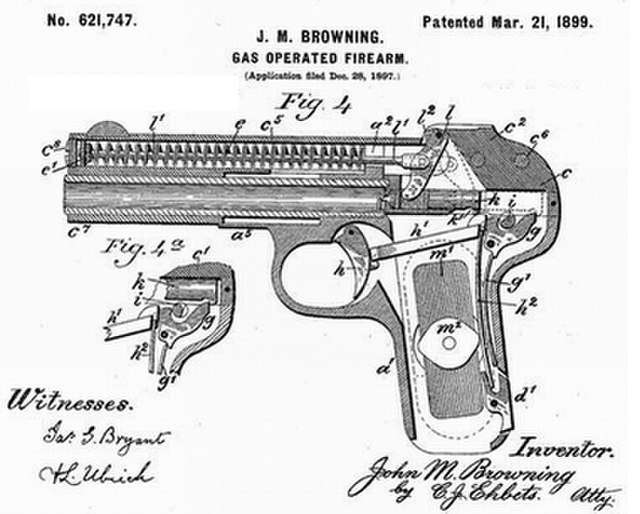
A patent drawing of the Browning M1899 pistol. It had a fixed barrel and was inexpensive to produce. [US Patent Office]
The next quantum leap came when Walther introduced the PP in 1929. It was a blow-back design too, but it also had a double-action/single-action mechanism and a decocker safety, which allowed the user to safely carry a round in the chamber without fumbling with manual safeties or risking a light trigger and an accidental discharge. The smaller PPK was introduced in 1931. Both pistols were meant for police work, but the new Nazi regime in Germany appropriated them into military service where the bulk of the larger Walther P38 was unnecessary. These handguns would be a common sight to the Soviet eye once Hitler invaded the Soviet Union in 1941.
For their part, the Soviets had taken inspiration from Browning but with designs that were a generation behind. The tumult of the Russian Civil War and Stalin’s consolidation over the country kept the Soviets from replacing their aging M1895 Nagant revolvers until 1930. That year, the Soviets adopted their first official autoloading pistol in the TT-30. Three years later, the improved TT-33 Tokarev entered service.
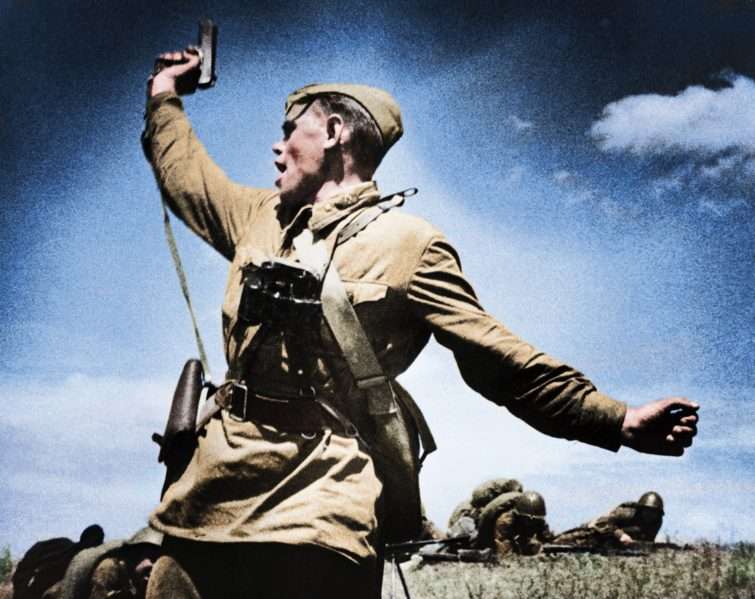
A Soviet commissar leads the way, Tokarev in hand, across the Ukrainian steppe in 1942. [Cassoway Colorations]
After winning the war and analyzing the costs of their equipment calculated in human lives, the Soviets felt the need for a new handgun. The Nagant finally left service and the Tokarev soldiered on alone, but the Red Army felt the Tokarev was needlessly powerful for what they needed for a handgun. Furthermore, the TT-33 only had a half-cock safety and soldiers died needlessly through careless accidents. The Soviets faced vast sums of PPs and PPKs in combat and came to the conclusion that it was a safe design, although the power of the .380 likely felt like too much of a step down from the old 7.62.
The Germans thought of upping the power factor with their blowback guns as well as evidenced by the 9×18 Ultra cartridge, which was developed in 1936 but never took off. It had a slightly longer case for more powder than the 9×17 (.380) but was not as powerful as 9mm Luger. In 1946, Boris Semin adapted a similar cartridge that could work in an inexpensive, blowback pistol. That became the 9x18mm Makarov cartridge once the Makarov PM pistol was adopted by the Red Army in 1951.
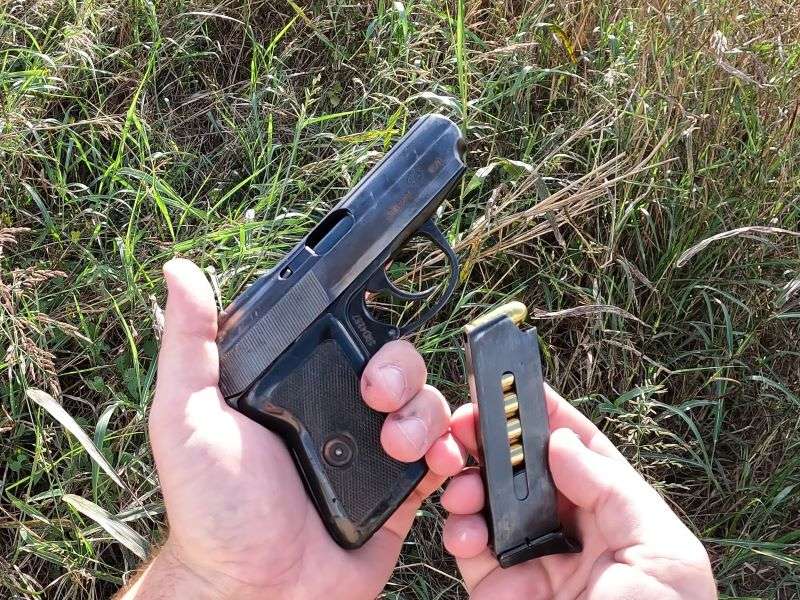
The Polish P-64 is just one of several designs that fire the 9mm Makarov round.
The 9mm Makarov cartridge was chambered in a number of handguns used by Communist Pact countries ranging from the various types of Makarov to the Polish P64, Hungarian PA-63, and Czech CZ-82. It continues to be used in the former Soviet Union because of sheer availability of pistols and ammunition that are rarely used. However, 9mm Makarov pistols have been a popular seller on the American surplus market thanks to their low price, reliability, and relative high power for their size.
9mm Makarov Ammo for Sale

Looking for 9mm Makarov ammo for sale? Here ya go!
Where to Find Your 9mm Makarov Ammo
- Gun.Deals ($$$ compare)
- Palmetto State Armory
- Guns.com
9mm Makarov: When a 9mm Isn’t 9mm
When it was not quite taboo to discuss such things in the public schools, the 9mm Makarov round came up in the context of the Cold War. The 9mm Makarov was mentioned to be able to work in 9mm Luger pistols used by NATO forces, but 9mm ammunition (9mm Luger) could not work in Russian pistols. Like so many things in the public schools, this is garbage.

Left to right: .380 ACP, 9mm Makarov, 9mm Luger.
The 9mm Makarov is nominally 9mm caliber but designed for blowback pistols, whereas the more powerful 9mm Luger is intended for locked breech guns, rather than some underhanded way to give the Russians an advantage in the event of a war. The 9mm Luger round has a tapered 19mm case, whereas the 9×18 Makarov uses a straight-walled 18mm case. Just by the numbers, a shorter case should work in a pistol made for the longer case. But it is not the case. The straight-wall case won’t fit, even though it is shorter. Furthermore, although both rounds have similar diameter bullets, the Russians measured their caliber by calculating the distance between the lands of the rifling in the barrel, rather than the raised grooves. As a result, 9mm Makarov uses a .365 inch bullet instead of a .355 inch bullet used in .380 ACP or 9mm Luger.
Comparative Ballistics
Surplus 9×18 Makarov ammo can be hard to find, several ammunition manufacturers produce loadings for the round ranging from any number of 95 grain FMJ loads to defensive hollow points from Hornady and Buffalo Bore.
In terms of power, the 9mm Makarov falls between .380 ACP and 9mm Luger, although exactly where in the spectrum it lies has been the subject of debate. To that end, I packed my 1970-produced Polish P-64 in 9mm Makarov, and a few .380 ACP and 9mm Luger pistols and set off for the range to learn more.
I started with a brief chronograph testing to determine exactly how much velocity each round was traveling. I benched my pistols and shot them across my Caldwell chronograph from a distance of ten feet. The five-round average velocities are as follows:
| Handgun | Ammunition | Muzzle Velocity (fps) | Muzzle Energy (ft. lbs.) |
| Ruger LCP 2.75 inch barrel | Federal 95 grain FMJ | 900 | 171 |
| Walther PD380 3.25 inch barrel | Federal 95 grain FMJ | 923 | 180 |
| P-64 3.3 inch barrel | S&B 95 grain FMJ | 1017 | 216 |
| Diamondback DB9 3.1 inch barrel | Winchester 124 grain FMJ | 991 | 270 |
| Rainier Dusk 19R 4.0 inch barrel | Winchester 124 grain FMJ | 1004 | 278 |
To give the 9×18 Makarov the best possible comparison, I expanded beyond service-sized handguns to include pocket-sized handguns that are popular for concealed carry. The .380 ACP cartridge is represented by the Ruger LCP and the Walther PD380 respectively, the Walther giving us roughly the same barrel length as the old Walther PP. The Rainier Dusk 19R is a Glock 19 clone standing in for a service handgun, while the little Diamondback DB9 stands in for smaller single-stack 9mms.
As it stands, the 9mm Makarov round fired out of my relatively small Polish P64 quitted itself well. The commercial brass-cased 95 grain FMJ round fired from the P64 clocked in right in the neighborhood of 100 feet per second faster than .380 ACP with either barrel length in that caliber. It was also a bit faster than the Winchester 124 grain FMJ loads I tested out of the 9mm Luger handguns. But this standard pressure 9mm Luger load still outclassed the 9mm Makarov in energy foot pounds because it achieves its velocity with a heavier 124 grain bullet in tow.
To illustrate how much or how little those 30 extra grains would make, I sandwiched five 2×4 pine beams together and shot them from a distance of ten feet. I fired one round of .380 from the LCP, followed by one round of 9mm Makarov out of the P-64, and one round out of the Rainier Dusk 19R.
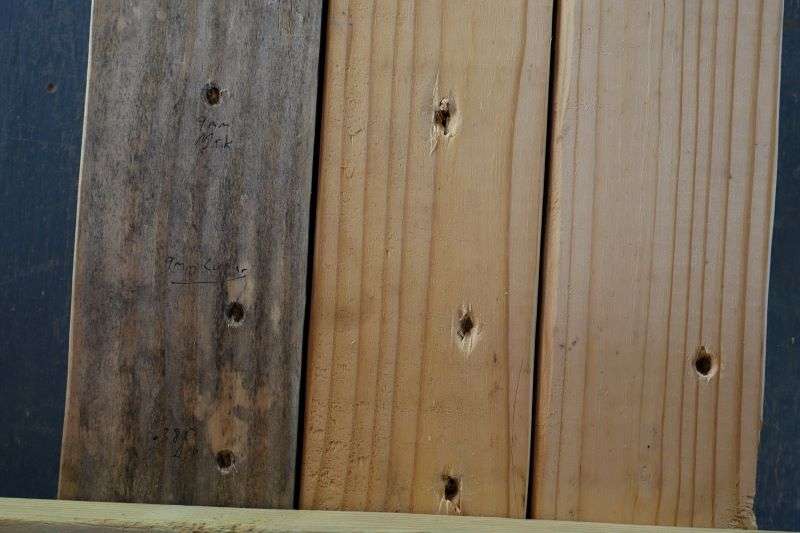
The fronts of the three boards places sequentially.
The Winchester 124 grain 9mm Luger round struck between the .380 and 9mm Makarov rounds, traveling cleanly through two boards before entering the third. It penetrated through, knocking splinters from the other side. It failed to completely clear the third board. Both the .380 ACP and 9mm Makarov stopped short in the second board. Both rounds pushed a jagged hole into the second board, indicating some tumbling, while the 9mm Luger round carried straight. From the front of the first board to the base of the recovered projectiles, the .380 penetrated 2 1/2 inches, while the 9mm Makarov and 9mm Luger penetrated 2 3/4 inches and 4 inches respectively.
9mm Makarov: Still a Force to Be Reckoned With
The 9mm Makarov round fit a peculiar time and a peculiar place. It was the unique Russian answer to a riddle first posited by John Browning at the very start of the automatic pistol: how to get the most power out of a weapon of last resort. Browning’s pistols were used, just like the Makarovs, CZs, and P-64s were. But for an inexpensive piece of protection that would spend most of its time in a holster, it paid to up the power factor. The Russians arrived at a good answer in a platform that was both inexpensive and safe, good attributes in a time where autoloading pistols were issued out to raw recruits who had never seen one let alone carry one.
Today the 9mm Makarov might best be left to the past. Locked-breech pistols are less complicated than in years past and CNC manufacturing has helped cheap this stronger and softer-shooting platform. But when taken at its own merits, the 9mm Makarov and the pistols that shoot it are not bad at all. Fixed-barrel blowback pistols are mechanically accurate and the Mak round itself has more potential than the .380, itself a round thought to be inadequate now thrust onto the concealed carry scene with new guns and better ammunition than in years past. While not quite up to snuff with even a poor choice of 9×19 ammo, the 9mm Makarov is still a force to be reckoned with. Small wonder that American ammo makers are making strides to breathe new life into that ComBloc round.
Check out some other pieces in our MilSurp column:
- Zastava M48 Mauser: a MILSURP Gem (breachbangclear.com)
- Steyr M95: Austria’s Mannlicher M1895 (breachbangclear.com)
- Carcano 7.35×51: The First Intermediate Cartridge (breachbangclear.com)


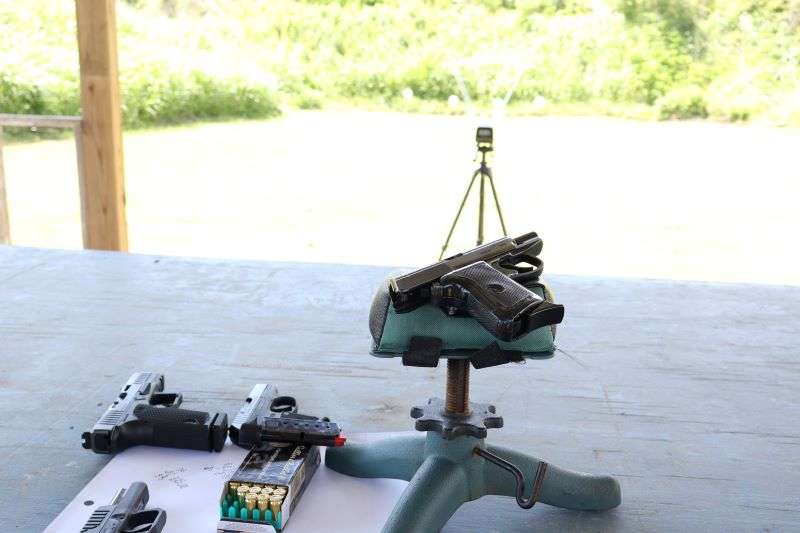

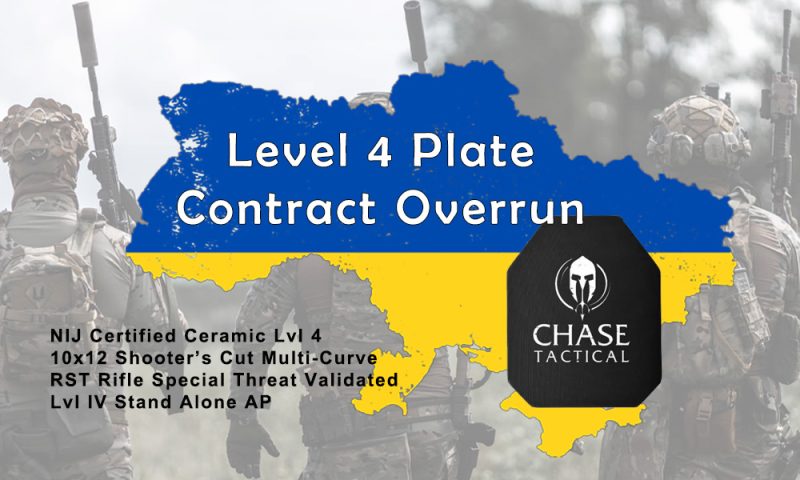



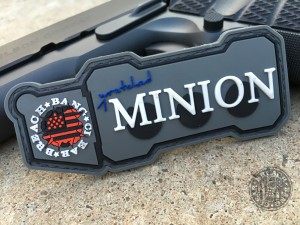
0 Comments